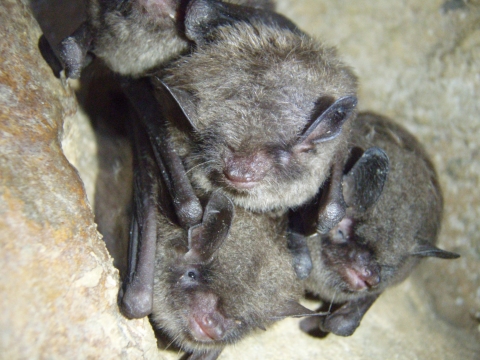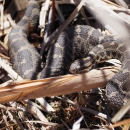Featured Species
Indiana bats (endangered) and northern long-eared bats (threatened) occur in forested habitat throughout Ohio. These two species’ populations have declined drastically in recent years due to a fungal disease known as white-nose syndrome. Other threats such as habitat loss and degradation, disturbance of hibernating bats and mortality from collision with man-made objects also influence populations of these species. Each year our office reviews thousands of proposed development projects and makes recommendations to avoid take of these species. Additionally, we work closely with the wind power industry to minimize take of listed bats as well as other non-listed birds and bats.
Ohio rivers and streams support a diverse array of freshwater mussels including 10 federally listed species and two additional species proposed for listing. We work with project proponents on survey methods when mussel streams may be impacted. We assist in planning dam removals that will improve mussel habitat and we contribute data to species status assessments to help inform recovery status and the need to list additional species.
Ohio supports six listed plants, many of which occur in very specialized habitat. The lakeside daisy only occurs on limestone alvars along Lake Erie; eastern prairie fringed orchids bloom in wet meadows; and northern monkshood thrives on rocky wooded cliffs. We work with partners to monitor plant populations, control invasive species invasive species
An invasive species is any plant or animal that has spread or been introduced into a new area where they are, or could, cause harm to the environment, economy, or human, animal, or plant health. Their unwelcome presence can destroy ecosystems and cost millions of dollars.
Learn more about invasive species , develop management plans and obtain grants to protect areas critical for recovery.















